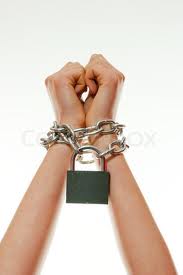A member of the Project Conversion Facebook page (affectionately called the “Congregation“) recently wrote:
“It is a fact that many women are verbally and physically abused yet many religions put the man over the woman and/or make it a sin for the woman to leave “wedlock”. How can those be reconciled?“
Thanks for asking such a difficult question, it’s what I live for. That, and bathing in acid. Just kidding. Here’s my answer:
Superficially, yes, it appears that women are generally found wanting in the larger world of religion. Of course there are exceptions that stand in the face of orthodoxy and orthopraxy, yet these usually evolve out of reform movements later on in a faith’s movement.
That said, the rise of new religious systems are often rebellions against the status quo of the current political, social, and/or theocratic models of their day. Here are a few examples of how women are treated in various faiths either due to scriptural directive or the culture built around the faith:
- Ultra conservative Islam, as practiced by groups such as the Taliban or the Wahhabi movement, require women to be fully covered and veiled using niqab or burqa. While ostensibly utilized to protect the modesty of these Muslim women, many view this as a sign of male dominance using the Qur’an and Hadith as validation. Such verses in the Qur’an include Sura 33:53, 33:59, and 24:30-31.
- There is also the issue of less than equal inheritance, power of witness, and others in the Qur’an for women.
- In the New Testament, Jesus does not appear to explicitly cover the role of women, however his most famous apostle, St. Paul, goes to great lengths in spelling out the parameters of women. Women, according to 1 Corinthians 11: 3-12 describe how men are the “head” of women and how women should veil themselves in prayer as in other cases. 1 Corinthians 14: 33-35 instructs that women should remain silent in church (it is shameful for women to speak) and should reserve all questions for their husbands at home. Women are not permitted ordination in many Christian sects and denominations.
- When the Buddha first instituted the Sangha (the order of monks), he refused admission to women. Only after the challenge of his trusted disciple, Ananda, did he relent, however not without conditions and a dire prediction. Buddhist nuns were given additional guidelines and rules which in some ways, subordinate them to monks. The Buddha also predicted that the Dhamma would only last half as long with women ordained.
- While women are regarded as equals in the eyes of the Baha’i Faith, they are conspicuously ineligible to sit on the 9-member council of the Universal House of Justice, the highest governing body of the Baha’i Faith. A defense of this ruling can be found here.
For the purpose of space, I cannot go over cases of apparent inferiority in every faith, however do not take the examples above as the only representatives of less-than-modern outlooks on the role of women in society and faith. In many cases, these faiths reformed harsher conditions on women from previous religions. To be fair, there are other faiths, such as various Pagan traditions, Jainism, and Sikhi in which gender equality is exemplified–often ahead of its time.
The question posited to me was, in light of the abuses and general misogynistic tendencies of faith juxtaposed with our modern landscape, can these apparent dichotomies be reconciled?
Honestly? No, not without reform, and reform is exactly what is happening. Many are re-reading the script of our religious traditions and re-casting them in our modern light. Women are now leading congregations across many traditions, serving as teachers and champions of faith. For every scripture-based grievance listed above, there are debates raging over the interpretation and context of these rules, regulations, and practices within scripture.
But the question remains: If we have to refashion our faith from antiquated norms in order to fit within our modern sensibilities and notions of equality and justice, did they hold much value to begin with? If scripture is the infallible, timeless word of the divine, how can we justify transforming them to our satisfaction? Shouldn’t they hold just as true now as they did when first uttered?
Personally, this is the issue I have with scripture. While I value these documents for their struggle to articulate and understand this idea of the divine, they more often than not reveal the fragile construct and hegemonic tendencies of human thought. Human minds tend to compartmentalize ideals and reject much of anything that threatens or contradicts these protected theological files, so it’s no wonder we have such a diverse religious landscape and interfaith warfare.
Because I view religions as pseudo-organic memes subject to the same principles and stimuli of evolution as we are, I dare say we haven’t seen the last of so-called “revelation.” Just as every faith is often a protest and revolution against its theological contemporary, perhaps we are on the cusp of a new religious evolution where struggles with gender equality, for example, are finally subdued.
So, is there a chance to reconcile? Perhaps not, but there is always room for another critter to evolve amidst the chaos.
Jai Vita.



